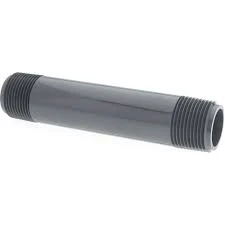-
Cangzhou Yulong Steel Co., Ltd.
-
Phone:
+86 13303177267 -
Email:
admin@ylsteelfittings.com
- English
- Arabic
- Italian
- Spanish
- Portuguese
- German
- kazakh
- Persian
- Greek
- French
- Russian
- Polish
- Thai
- Indonesian
- Vietnamese
- Zulu
- Korean
- Uzbek
- Hindi
- Serbian
- Malay
- Ukrainian
- Gujarati
- Haitian Creole
- hausa
- hawaiian
- Hebrew
- Miao
- Hungarian
- Icelandic
- igbo
- irish
- Japanese
- Javanese
- Kannada
- Khmer
- Rwandese
- Afrikaans
- Albanian
- Amharic
- Armenian
- Azerbaijani
- Basque
- Belarusian
- Bengali
- Bosnian
- Bulgarian
- Catalan
- Cebuano
- China
- China (Taiwan)
- Corsican
- Croatian
- Czech
- Danish
- Esperanto
- Estonian
- Finnish
- Frisian
- Galician
- Georgian
- Kurdish
- Kyrgyz
- Lao
- Latin
- Latvian
- Lithuanian
- Luxembourgish
- Macedonian
- Malgashi
- Malayalam
- Maltese
- Maori
- Marathi
- Mongolian
- Myanmar
- Nepali
- Norwegian
- Norwegian
- Occitan
- Pashto
- Dutch
- Punjabi
- Romanian
- Samoan
- Scottish Gaelic
- Sesotho
- Shona
- Sindhi
- Sinhala
- Slovak
- Slovenian
- Somali
- Sundanese
- Swahili
- Swedish
- Tagalog
- Tajik
- Tamil
- Tatar
- Telugu
- Turkish
- Turkmen
- Urdu
- Uighur
- Welsh
- Bantu
- Yiddish
- Yoruba

Nov . 08, 2024 10:29 Back to list
Understanding ANSI B 16.5 Standards for Flanges and Pipe Connections in Engineering
Understanding ANSI B16.5 A Comprehensive Guide to Flanged Fittings
In the realm of mechanical engineering and piping systems, standards play a crucial role in ensuring reliability and safety. One of the recognized standards is ANSI B16.5, which governs the design and manufacturing of flanged fittings used in piping systems. This document is essential for engineers, manufacturers, and anyone involved in the fabrication or installation of piping systems.
Overview of ANSI B16.5
ANSI B16.5, developed by the American National Standards Institute (ANSI) and the American Society of Mechanical Engineers (ASME), specifies the requirements for pipe flanges and flanged fittings. The standard addresses a variety of flange types, including weld neck, slip-on, threaded, and blind flanges, across various pressure ratings and materials. The standard applies to flanges ranging from ½ inch to 24 inches in nominal pipe size, covering pressures from 150 to 2500 psi.
Importance of Flanges in Piping Systems
Flanges are critical components in piping systems, serving as the junctions that connect various sections of pipe, valves, pumps, and other equipment. The design and construction of flanges must withstand operational pressures and temperatures, ensuring system integrity. ANSI B16.5 provides the guidelines necessary to achieve this, detailing dimensions, tolerances, and materials that must be used in manufacturing flanges.
Key Features of ANSI B16
.51. Standardization of Dimensions ANSI B16.5 provides standardized dimensions for flanges, facilitating compatibility among different manufacturers and suppliers. This standardization is crucial to ensure that components fit correctly without the need for extensive modifications. 2. Material Specifications The standard outlines the materials permissible for flanges, including carbon steel, stainless steel, and various alloys. This is important because the choice of material affects not only the strength and durability of the flanges but also their resistance to corrosion and other environmental factors.
ansi b 16.5

3. Pressure Ratings ANSI B16.5 categorizes flanges based on their pressure-temperature ratings. Understanding these ratings is vital for engineers when designing systems that must withstand specific pressure conditions.
4. Testing and Quality Assurance Compliance with ANSI B16.5 involves rigorous testing of flanges to ensure they meet specified mechanical properties. This includes testing for tensile strength, yield strength, and impact resistance, providing end-users with assurance regarding the quality and reliability of their piping systems.
Applications of ANSI B16.5 Flanges
Flanges conforming to ANSI B16.5 are used in various applications ranging from industrial plants and oil refineries to water treatment facilities and chemical processing plants. They are essential in systems where pressure and temperature conditions are critical, such as in the transportation of gases and liquids. The consistency and reliability afforded by ANSI B16.5 flanges make them a preferred choice in many high-stakes environments.
The Future of Flanged Fittings
As industries evolve, so too do the standards that govern them. Advances in materials science, manufacturing techniques, and pressure technology may lead to updates in ANSI B16.5. Furthermore, initiatives aimed at improving sustainability and reducing environmental impacts could influence future revisions of the standard. The ongoing development of advanced materials and coatings may also expand the performance capabilities of flanges, leading to enhanced safety and efficiency in piping systems.
Conclusion
ANSI B16.5 is more than just a set of guidelines; it acts as a cornerstone for the safe and efficient operation of piping systems. Understanding its specifications and requirements is essential for engineers and manufacturers alike. As industries continue to grow and change, so too will the standards that help ensure their safety and efficiency. Whether you are involved directly in the design and installation of piping systems or are merely a stakeholder in industries reliant on these systems, familiarity with ANSI B16.5 will undoubtedly enhance your knowledge and skills, ensuring that you can contribute effectively to the engineering realm.
Latest news
-
ANSI 150P SS304 SO FLANGE
NewsFeb.14,2025
-
ASTM A333GR6 STEEL PIPE
NewsJan.20,2025
-
ANSI B16.5 WELDING NECK FLANGE
NewsJan.15,2026
-
ANSI B16.5 SLIP-ON FLANGE
NewsApr.19,2024
-
SABS 1123 FLANGE
NewsJan.15,2025
-
DIN86044 PLATE FLANGE
NewsApr.19,2024
-
DIN2527 BLIND FLANGE
NewsApr.12,2024
-
JIS B2311 Butt-Welding Fittings LR/SR 45°/90° /180°Seamless/Weld
NewsApr.23,2024











